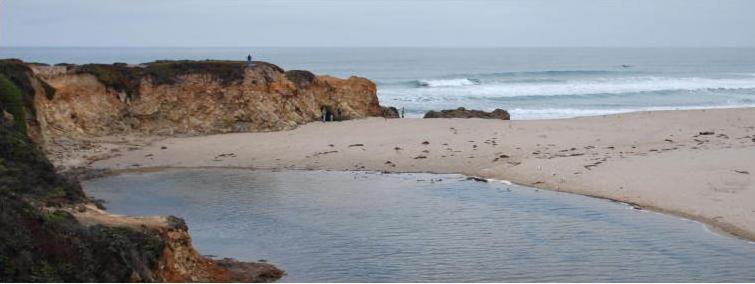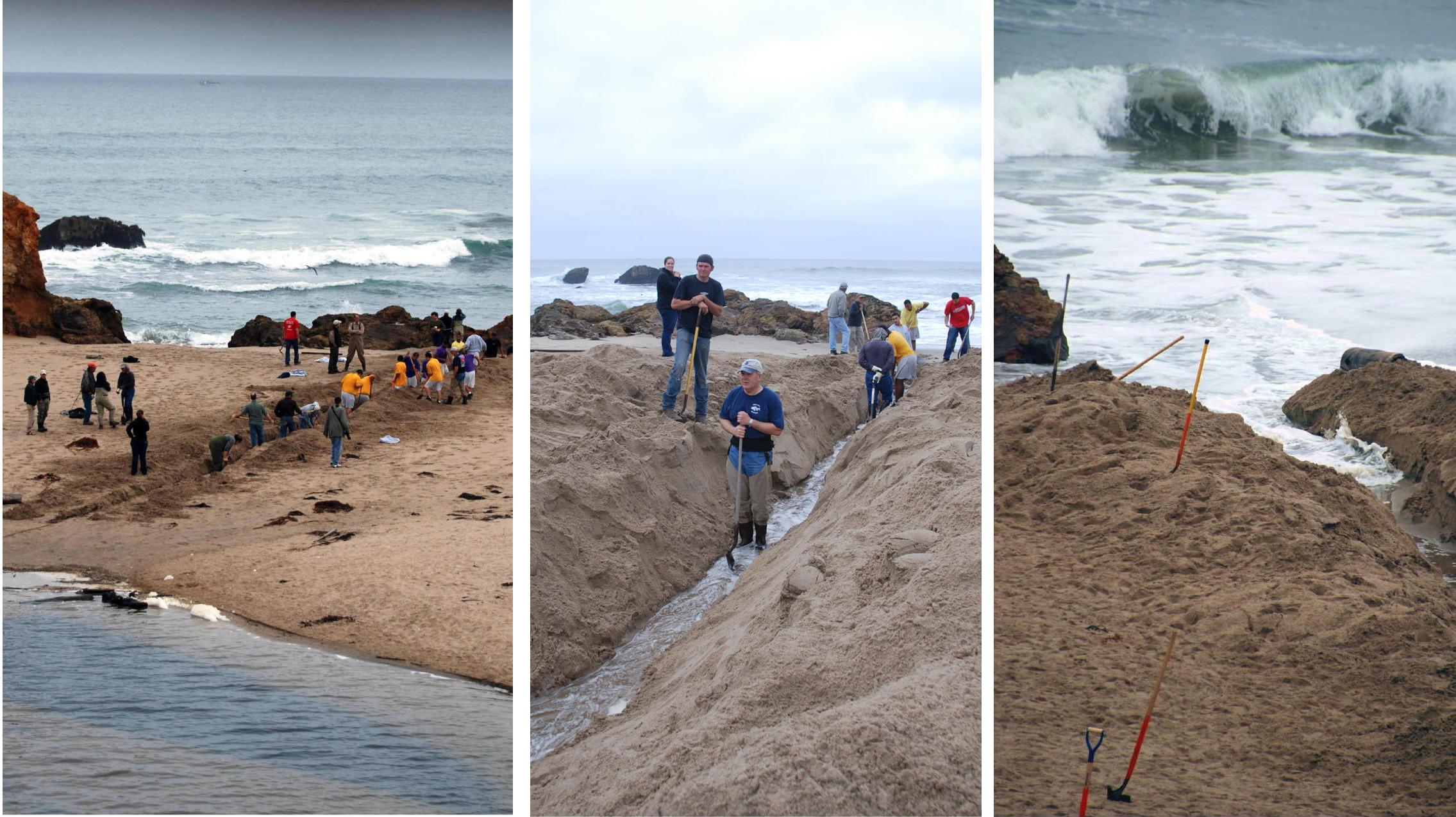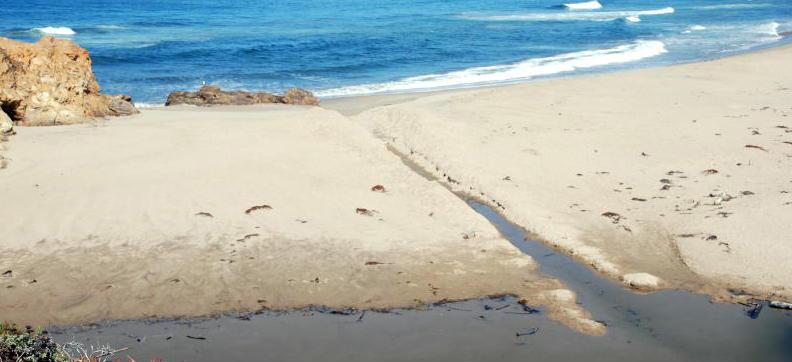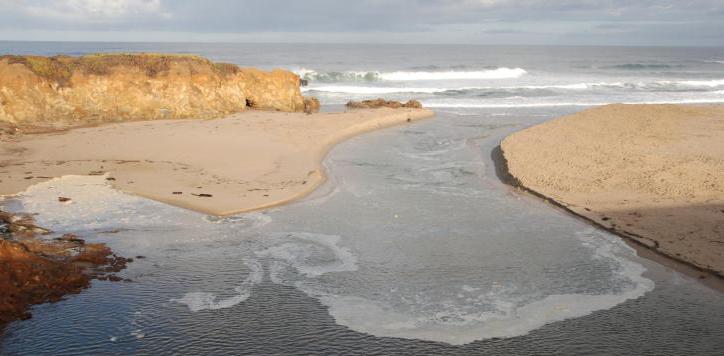Fish kills following the breach of the Pescadero sandbar have been attributed to the decline in water quality that occurs with the draining of the lagoon at the first low tide after it opens. Researchers think that the turbulent mixing of oxygen-depleted water and lagoon sediments further removes oxygen from the water and adds hydrogen sulfide. Fish that do not leave the areas with low water quality can suffocate. In 2011, for example, 235 dead steelhead--a threatened species under the Endangered Species Act--were collected following the sandbar breach.
By breaching the sandbar earlier, NOAA hoped that the water quality of the lagoon could be maintained and the likelihood of a fish kill reduced.
First Sandbar Breach
The sandbar closed in 2012 on September 8 or 9. The closure was documented by state park volunteer Nancy Frost, who had recorded the status of the sand bar for months. Her photos provided a record that contributed to analysis of the complex water system.
On October 4, NOAA directed volunteers from Pescadero, agency staff members, and residents from Camp Glenwood to dig a trench using shovels to reopen the sandbar. This was the sandbar before digging began.
The Sandbar Returns
In the days that followed, the channel began to fill with sand deposited by waves that washed over it at high tide. Although some ocean water entered the lagoon, no water drained from the lagoon at low tide.
By October 25, the channel completely disappeared--the sandbar was back in place.
New plans were made.
Second Sandbar Breach
Since the channel created by first breach closed, it was decided to try to create a larger channel with mechanized equipment. This approach raised problems, since the equipment would have to be brought on the beach through an area used by another threatened species--the Western Snowy Plover, which winters on Pescadero State Beach and nested there last year for the first time in over 30 years.
The second attempt to breach the sand bar took place on October 23. State park Plover Watch volunteers spent the day on the beach watching the plover flock and monitoring the impact of the activity.
Luckily the plovers were north of the sandbar and were only slightly disturbed when the excavator passed down the beach.
The next phase of the project was already underway--with biologists from state parks and other agencies monitoring the water in the lagoon and Pescadero Marsh to ascertain the impact of the sandbar breach.
It is hoped that the results of their study of water quality before, during, and after the breach will contribute to a better understanding of how the lagoon system responds to breaching and will help inform future management decisions.
In addition to successfully opening a large channel through the sandbar, the excavator distributed the sand that had been dug up and leveled the area around the channel.
Following the October 23 breach, the movement of water widened the channel considerably, as can be seen in the photo below, taken on the morning of the 24th.
Initially, water flowed out of the lagoon at low tide and entered at high tide, but within a few days the only movement of water was at high tide, when waves washed into the lagoon. By November 3, no water came into the lagoon from the ocean, even at high tide, but larger swells later in the week again caused some inflow.
A Historical Note
Visitors to Pescadero State Beach often ask about the tunnel in the cliff south of the mouth of Pescadero Creek. The tunnel is a useful reminder that efforts to control the creek and the sandbar at its mouth date back more than a century.
According to an assessment of the Pescadero-Butano watershed prepared in 2004 (page 3-28), efforts to alter the flow of Pescadero Creek and break the sandbar go back as far as the late 19th century. The tunnel was the result of one such effort. According to the report:
During the drought of 1897-1898, Pescadero Creek did not have sufficient rainfall to breach the sandbar, though there was enough rain to cause flooding of the adjacent farmlands following a healthy rain during December 1898. Pescadero farmers raised an estimated $200 to drill a tunnel through the point on the south side of the beach, hoping that the hole would offer an outlet to the creek and prevent further flooding. The tunnel provided limited success and eventually plugged up with sand.
Water still occasionally flows through the tunnel, but it does not overcome the sand bar.




